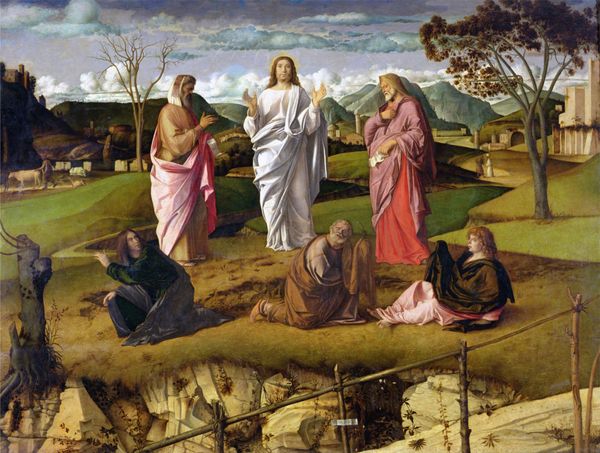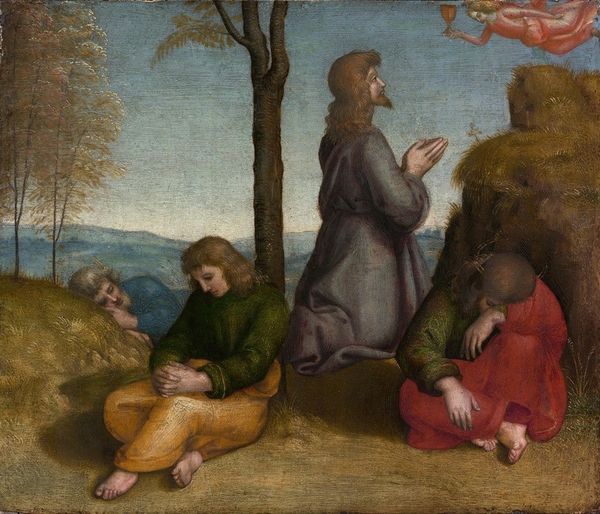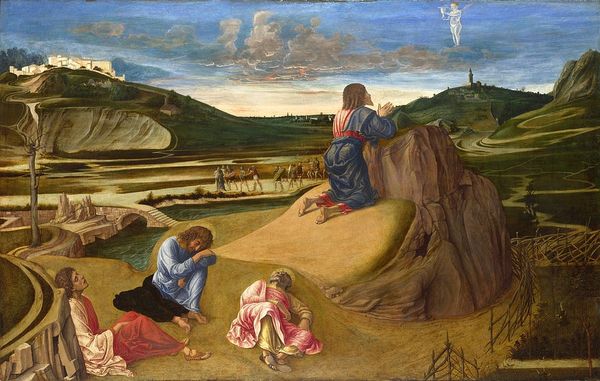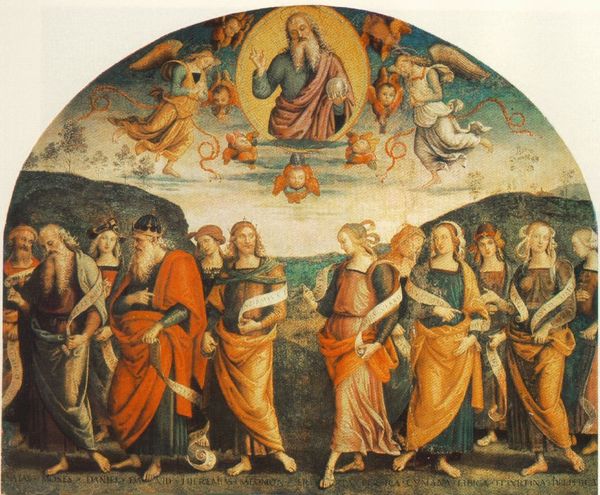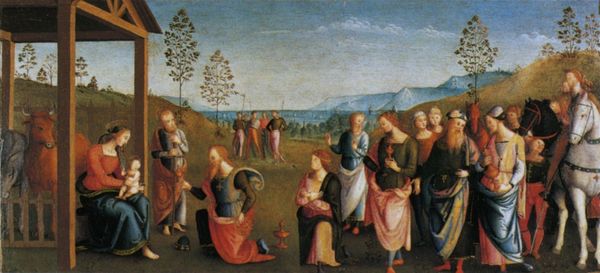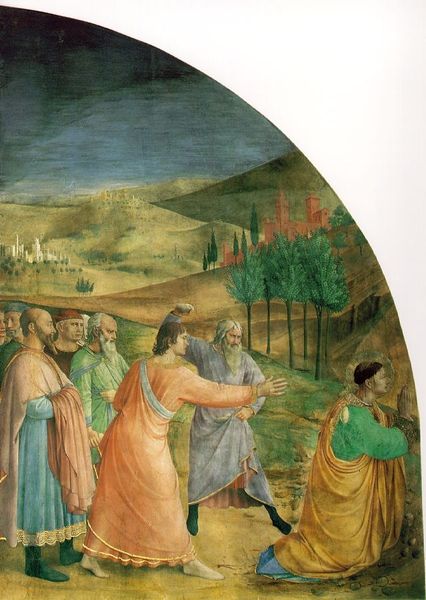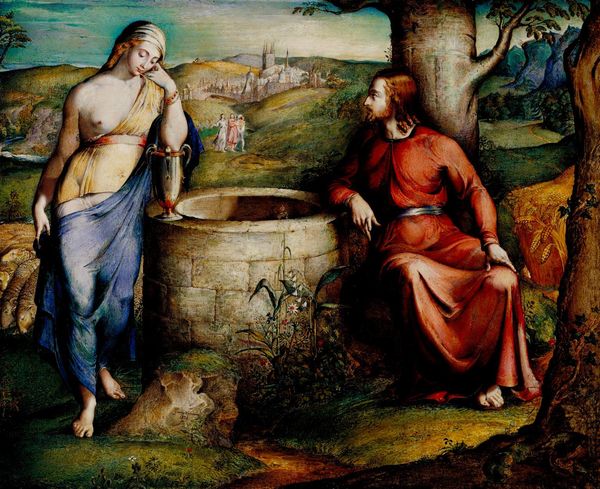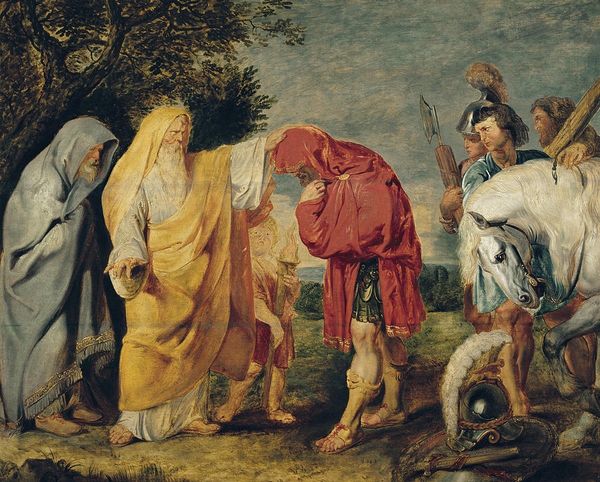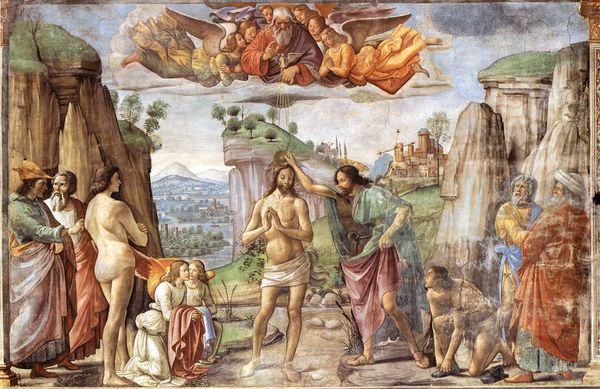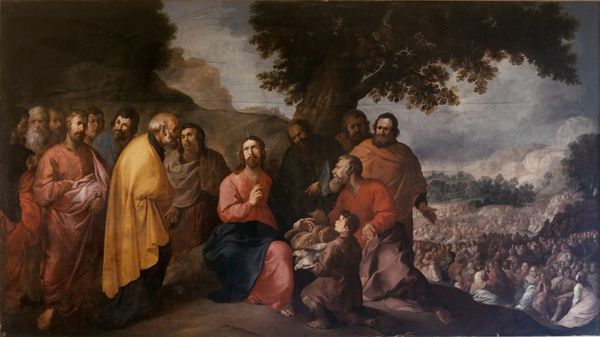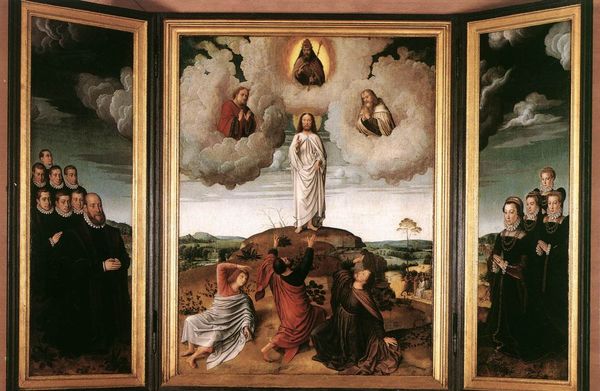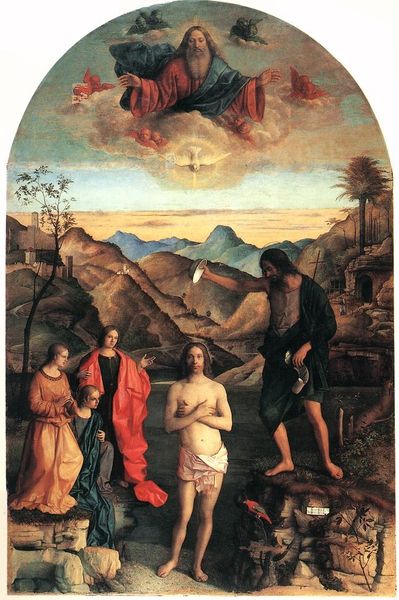
painting, oil-paint
#
painting
#
oil-paint
#
landscape
#
figuration
#
oil painting
#
jesus-christ
#
group-portraits
#
christianity
#
history-painting
#
italian-renaissance
Copyright: Public domain
Curator: Lorenzo Lotto's oil painting, "Christ Leading the Apostles to Mount Tabor," created around 1512, presents a fascinating episode in Christian narrative history. Editor: My initial reaction? There’s a curious sense of spatial imbalance, almost a stage-like quality to the composition. It draws my eye immediately to the top right, with those bright figures on the hill, but feels... grounded in its materiality, the textures built by the oil paint. Curator: Absolutely. Lotto places the biblical narrative of Christ's Transfiguration within a distinctly Renaissance humanist framework. Consider how the artist explores power dynamics, not only in the spiritual message but in the staging of its key players. We see Christ leading his apostles—an act of divine mentorship, and the revelation on the hill is a transformation that can speak to anyone undergoing a profound change in understanding, potentially echoing the tumultuous transformations within Renaissance society itself. Editor: True, but the material process behind these representations intrigues me just as much. The landscape, so central to this era, is achieved through visible brushstrokes and layering. We see evidence of Lotto's process, the ways he's built form and texture from the ground up. The raw materials are celebrated in their manipulation, reflecting a fascination with the physical means of representation itself. Were his clients of similar mind, did this process connect with his buyers? Curator: Well, considering Lotto's patrons at the time, the Church likely emphasized the narrative’s redemptive potential, to see and internalize this material made meaningful. However, viewing this scene today allows us to analyze power and authority. The visual hierarchy clearly positions Christ, alongside Moses and Elijah, in positions of authority at the hill's crest, yet it simultaneously asks: whom does religious staging benefit? Editor: The landscape grounds everything, I would argue. That luminous landscape becomes the means by which this entire scene gets interpreted. Notice the material contrast, not only in colour, but in technique that leads the eyes to wander and search the texture of the landscape. We see the divine as *painted* by the hand of an earthly master, thereby inviting us to question where divine labour stops and the hand of humans begins. Curator: So in examining "Christ Leading the Apostles," it's clear to see not only an artistic mastery, but an intentional staging of power. Lotto uses a religious story to pose crucial questions about faith, authority, and knowledge in society at large. Editor: And examining its material execution helps one see the artist as something much closer to our time; by focusing on texture, surface, and technique, "Christ Leading the Apostles" is about not only what to believe, but also about how to see the art.
Comments
No comments
Be the first to comment and join the conversation on the ultimate creative platform.
